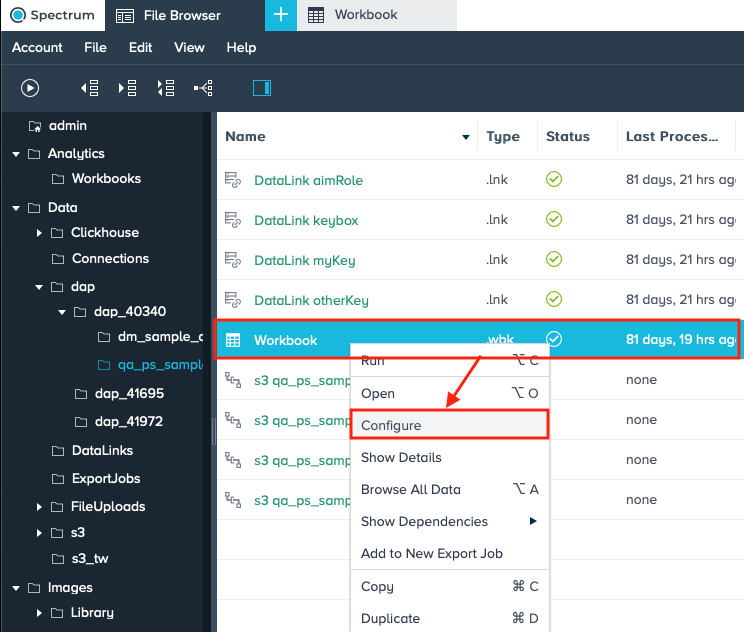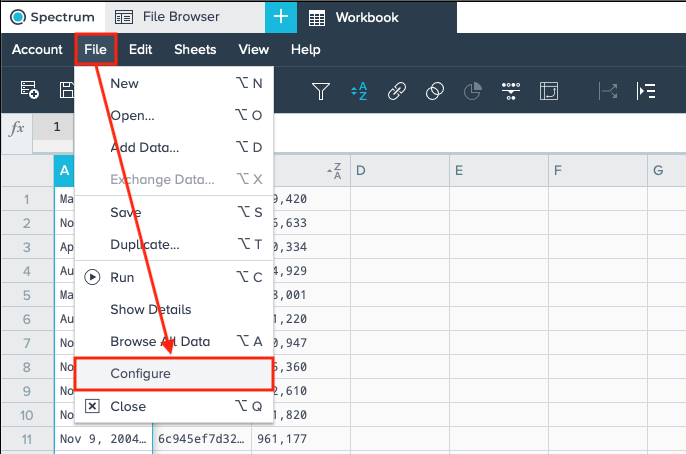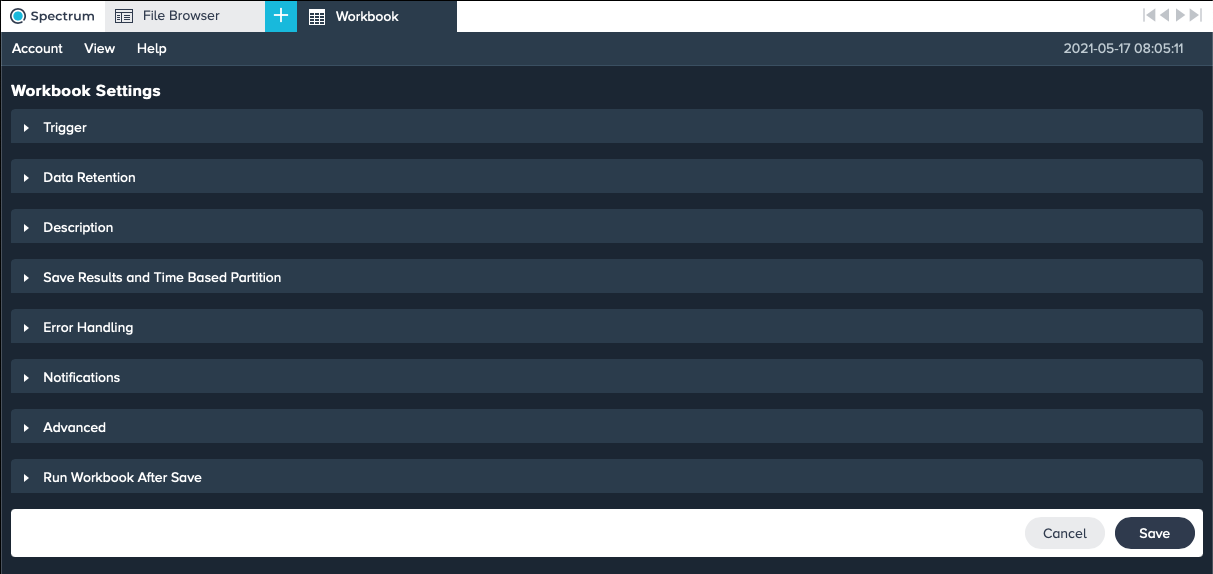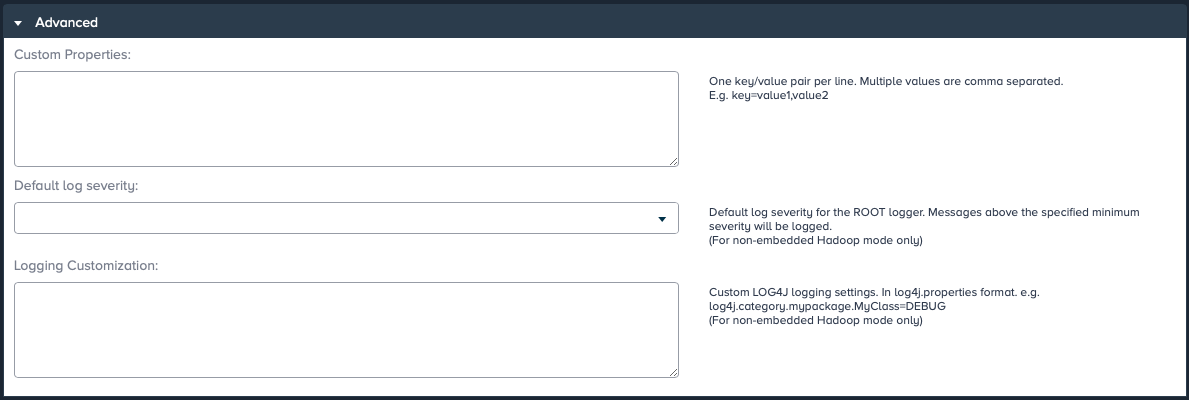Workbook Settings
The Workbook Settings page provides information about:
- trigger
- data retention
- the Workbook description
- saving results and time based partitions
- error handling
- notifications
- advanced settings
- running a Workbook after saving
Workbook settings can be configured when creating a new Workbook or be edited later on.
Accessing Workbook Settings#
You can access the Workbook settings via:
-
the File Browser: Richt-click on the Workbook and select "Configure". The Workbook settings page opens.

-
the Workbook: Click "File" and select "Configure". The Workbook settings page opens.

Workbook Settings Overview#

Configuring Workbook Settings#
Trigger Options#

The trigger settings specify how often the Workbook data is calculated. It has the following options:
- Manually: You determine to run the Workbook as needed. If a Workbook is triggered manually and the Workbook is currently running, the new run is queued to run after the current run has completed.
- Data driven: Calculates Workbook when any specified datasource is updated. This suitable for a datasource with periodic updates. It isn't recommended if data changes constantly. If a Workbook is triggered when data comes in, the new run begins running as soon as the new data is available.
- Scheduled: Workbooks run at a specified time. If a Workbook is triggered by a schedule and the Workbook is currently running, the new run is skipped.
Data Retention#

The tab 'Data Retention' provides the options on how to store Workbook data:
- Purge historical data: Decide whether to keep the last n results and purges the results n days/ weeks or moths after they were generated.
- Never delete historical data: Data is never being deleted.
- Export only: Data is never being kept.

Description#

Option to give a description for your Workbook.
Save Results and Time Based Partition#

Saving results specifies which Workbook sheets are saved and visible. By saving only the sheets that you need you can improve performance and computation time. If you want to retain smart sampling on filtered sheets, make sure to save them. Smart sampling is disabled if a sheet isn't saved because it can slow down other processes.
The Time Based Partition column displays which sheets have a date type column. If not all partitions need to be saved, set specific date ranges to save.
INFO: The indicator 'Consumed by' marks the sheets that are being used by a downstream Workbook or for an export job. This helps to detect sheets that are no longer needed to be kept.
Error Handling#

Specifies what to do if Spectrum encounters a row that possibly contains invalid or missing data.
You can choose to:
- Ignore: Ignores error calculations leaving the cell blank and continues processing the Workbook.
- Skip: Skips the error and calculate rows with valid data. The invalid data is dropped.
- Abort: Stops the calculation. This option stops processing the Workbook.
Notifications#

You can also specify who should be informed if there is a problem or when a Workbook is successfully run. Separate multiple email addresses with a comma.
Advanced Workbook settings#

The advanced settings allow custom key/value properties and logging severity/customization options.
- Custom properties: Add custom properties.
- Default log severity: Specify the severity of logging messages to be recorded.
- Logging customization: Add custom LOG4J settings.
Run Workbook After Save#

Select the checkbox to run the Workbook directly after saving or updating the Workbook configuration page.